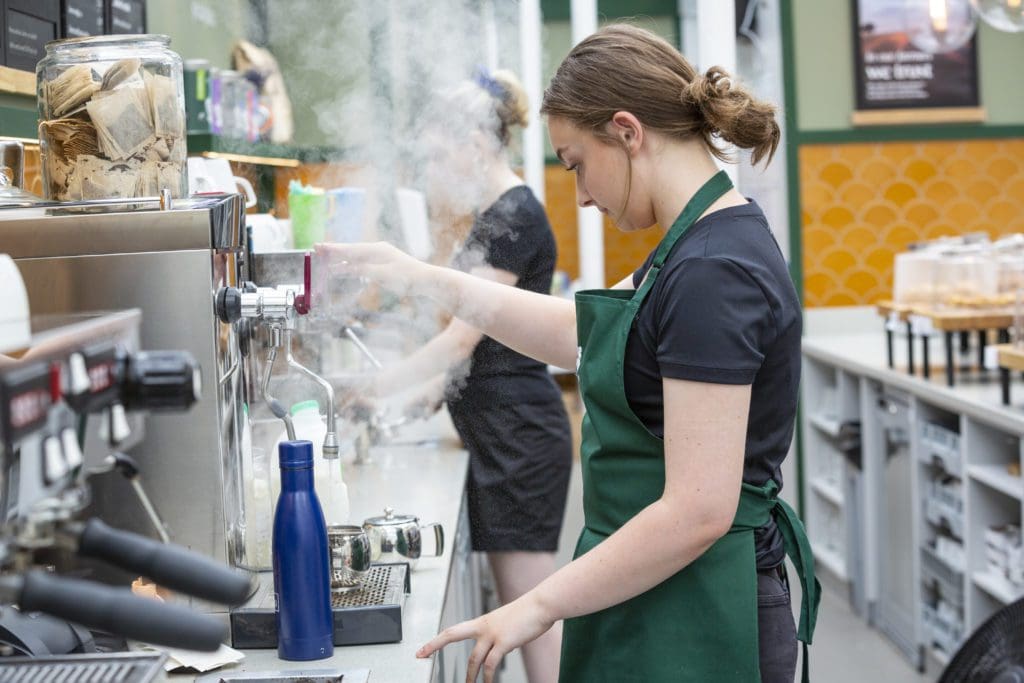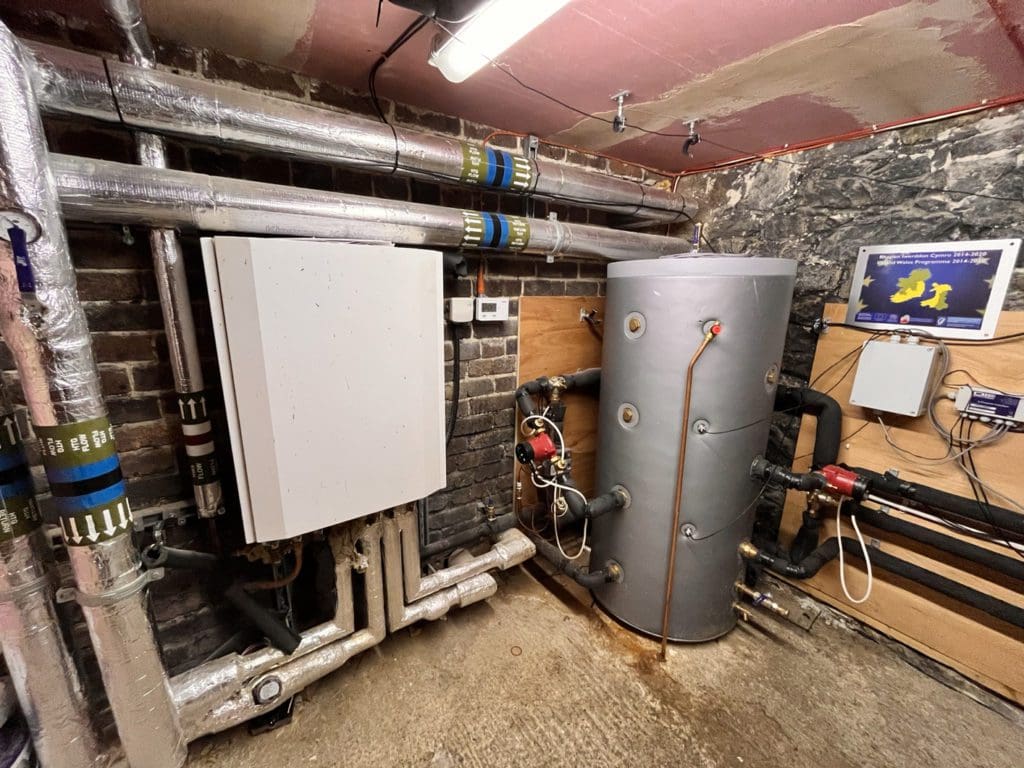Researchers from Trinity College Dublin and Bangor University are leading a six-year project aiming to stop useful energy going down the drain. They have piloted a system that recovers energy from wastewater at Penrhyn Castle and Garden – a fantasy castle and garden owned by National Trust Cymru in north Wales, UK.
Using the new technology, the researchers are extracting heat from the hot wastewater flowing out of the kitchens at between 20°C and 55 °C, and use this to preheat the cold water coming into the kitchens. The heat recovery system has been operational since February 2022 at Penrhyn Castle and Garden. A formal launch event was held on the 11th of Oct 2022 to highlight the energy saving and climate impacts that the technology achieved in the past year.

Professor in Civil Engineering at Trinity, and the Dŵr Uisce project lead, Prof Aonghus McNabola, said: “We have, alongside our partners at Bangor University, been working closely with National Trust Cymru on this project over the last 6 years. We are hopeful that we will further develop this exciting new heat recovery technology and that it may soon be used more widely in the food and hospitality sector.”
“This technology has the potential to reduce energy consumption at Penrhyn Castle’s tea rooms by over 230 kWh per month. At the current exceptionally high energy prices the payback period of the system can be achieved in a little over one year. It can generate over £1770 per annum in heat savings. We are excited by these possibilities, and are very grateful for the opportunity to design, implement and showcase it with the support of National Trust Cymru.”

This heat is currently provided by a main heating loop, where the heat is generated in a biomass boiler house, and then pumped to the rooms in the castle. The savings are thus expected to be twofold, not only will the pellet consumption of the boiler be reduced, but, more importantly, the electricity consumption, used for driving the pumps, will decrease as well.
Dr Prysor Williams is leading the team at Bangor University, who are tasked with calculating the impacts of installing the technology. He commented, “As well as the obvious financial savings, we expect this project to lead to greenhouse gas emission savings of just over 780 kg CO2 equivalent, per annum. If the technology is implemented more broadly, it could offer real economic and environmental benefits – a clear ‘win–win’”.
If successful at Penrhyn Castle, the technology will be rolled out at other sites across Ireland and the UK, where it should support the growing energy recovery sector and could potentially offer significant financial and carbon savings over the coming years for organisations and businesses that produce large quantities of hot wastewater, such as hotels, restaurants, and commercial kitchens.
Consultancy Manager for the Climate, Land Outdoors and Nature team at National Trust Cymru, Paul Southall, said: “At a time where cost of living is at its highest on record, we must find ways to be more energy efficient – but we need to do more than just reduction in use. It’s also about the re-use of waste, or what we currently consider to be waste.”
“We’re working to improve energy systems at our places particularly at built heritage sites that can be hard to heat and where implementing new systems can be difficult due to conservation needs and costs. However this technology has proved that it can be successfully integrated into our buildings, at an affordable cost compared to other energy systems, whilst bringing the same great benefits.”
“The energy generated from the heat recovery system produces over 2,760 kWh a year which powers a quarter of our hot water needs in the tea-room, or in other terms, the energy produced will enable us to make over 88,000 cups of tea a year! With a 100,000 visitors a year, that’s almost enough to give every visitor a cup of tea!”
“The heat recovery system at Penrhyn Castle is a small step to become carbon net zero by 2030, but it could be a big step forward if we integrate it across all our sites in Wales, England and Northern Ireland. It also has the potential to make big cost savings across the organisation which would allow us to continue investing charitable funds in caring for our places, for everyone, for ever.”
The technique trialled at Penrhyn consists of using the hot drain water, with peaks up to 57°C, to preheat the mains water before it enters the current heating (biomass) system at the castle. Thanks to this preheating, it will require less energy to heat the hot water, saving energy and money, while also reducing greenhouse gas emissions.
This project is being supported by several different companies who have provided expertise in developing this project, including Detectronic, whose technology has been used for wastewater flow monitoring, and Showersave, whose technology will be adapted for heat recovery at the Castle.
The Dŵr Uisce project is part of an Ireland-Wales Cooperation Programme 2014-2020 project supported by the European Regional Development Fund (ERDF).
